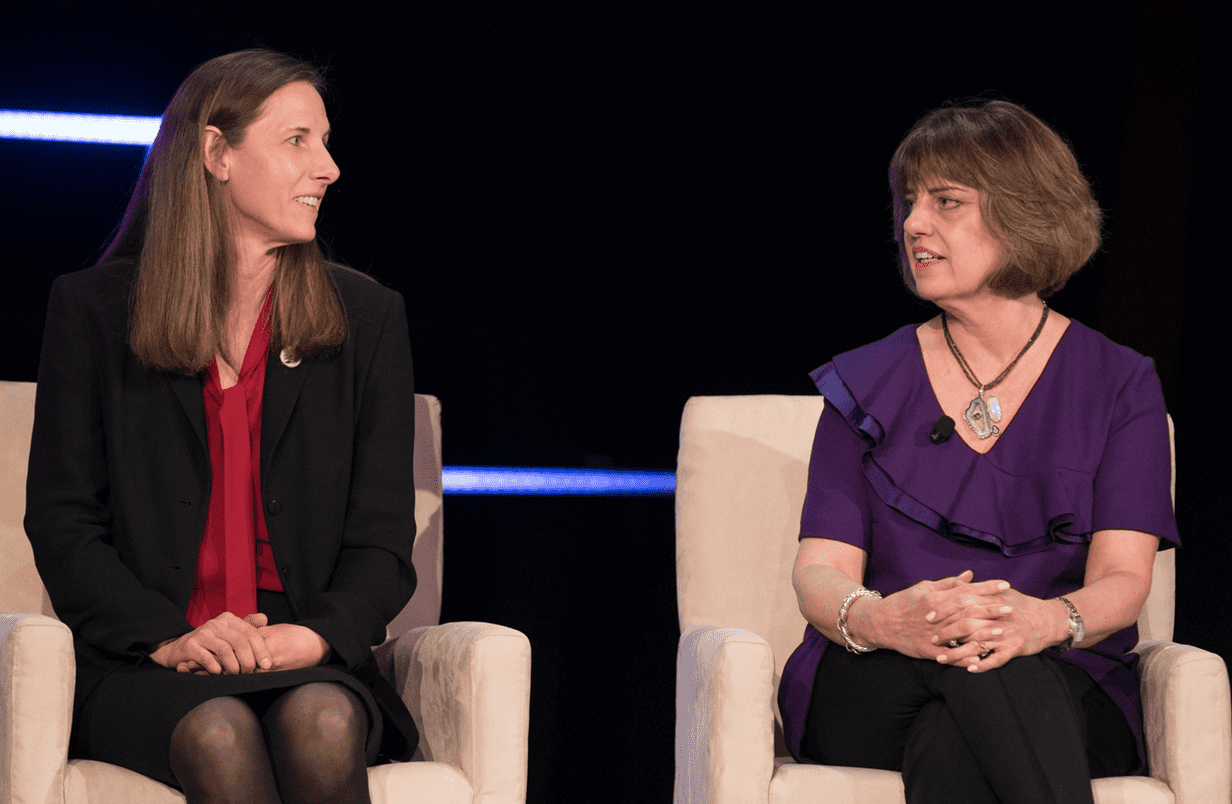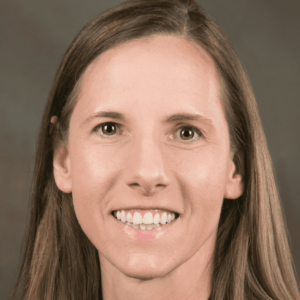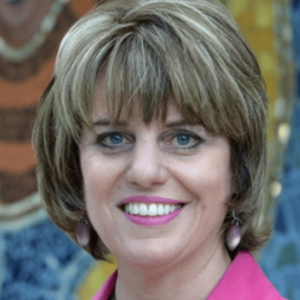
The two charitable organizations represented in the “Beyond Supply Chain” conversation at the AWESOME Symposium on May 10, are different in many ways. The American Logistics Aid Network (ALAN), run by Kathy Fulton, mobilizes and coordinates supply chain resources to deliver aid to victims of disasters. Ronald McDonald House Charities (RMHC), with Sheila Musolino as CEO and President, provides comfort, support and resources to families with sick children around the world.
But they’re similar in ways, too. Kathy and Sheila agree their organizations serve people on “the worst days of their lives.” In spite of that, each says, “I have the best job in the world” and they find their work inspiring and rewarding.
Both Kathy and Sheila come from supply chain backgrounds, so to arrive where they are today, leveraging their supply chain and leadership skills for non-profit organizations, required taking some risks.
 Kathy was Senior Manager of Information Technology Services at Saddle Creek Logistics Services. She had become involved in ALAN when it was a new non-profit started right after Hurricane Katrina by 13 professional supply chain associations to be the clearing house for disaster response. When the Executive Director Jock Menzies died unexpectedly, Kathy had to decide: “Do I let this organization fade, or do I jump in and keep it going?” She “jumped” and now 30 associations and hundreds of companies respond quickly to disasters, re-establishing a reliable supply chain that can deliver clean drinking water, food, shelter, medical supplies, communications, and transportation.
Kathy was Senior Manager of Information Technology Services at Saddle Creek Logistics Services. She had become involved in ALAN when it was a new non-profit started right after Hurricane Katrina by 13 professional supply chain associations to be the clearing house for disaster response. When the Executive Director Jock Menzies died unexpectedly, Kathy had to decide: “Do I let this organization fade, or do I jump in and keep it going?” She “jumped” and now 30 associations and hundreds of companies respond quickly to disasters, re-establishing a reliable supply chain that can deliver clean drinking water, food, shelter, medical supplies, communications, and transportation.
 Sheila’s progression was more planned, yet it still required some soul searching and saying yes to uncertainty. She had worked for McDonald’s for 29 years prior to her RMHC positions, as Vice President, McDonald’s U.S. Supply Chain, and had been involved in the charity as a volunteer all those years. In 2013, she became COO of RMHC and then in 2015 was named to her current role as CEO and President. Although there were other positions at McDonald’s that may have been opportunities, the non-profit leadership job was her passion. Currently RMHC has programs in 64 countries and regions including over 360 Ronald McDonald Houses, over 200 Ronald McDonald Family Rooms which operate in hospitals and 50 Ronald McDonald Care Mobiles. Through a network of local Chapters in communities across the globe, RMHC provides more than 2.4 million overnight stays for families at Ronald McDonald Houses and Family Rooms.
Sheila’s progression was more planned, yet it still required some soul searching and saying yes to uncertainty. She had worked for McDonald’s for 29 years prior to her RMHC positions, as Vice President, McDonald’s U.S. Supply Chain, and had been involved in the charity as a volunteer all those years. In 2013, she became COO of RMHC and then in 2015 was named to her current role as CEO and President. Although there were other positions at McDonald’s that may have been opportunities, the non-profit leadership job was her passion. Currently RMHC has programs in 64 countries and regions including over 360 Ronald McDonald Houses, over 200 Ronald McDonald Family Rooms which operate in hospitals and 50 Ronald McDonald Care Mobiles. Through a network of local Chapters in communities across the globe, RMHC provides more than 2.4 million overnight stays for families at Ronald McDonald Houses and Family Rooms.
The responsibilities Kathy and Sheila have now are much broader than their previous supply chain roles, and they both emphasized that the greatest skills they bring to their roles are relationship skills.
In Sheila’s case, as she assimilated into her new role, she realized that a non-profit organization is no different from a for profit organization. She started by surveying the team and other leaders in the RMHC system and assessing staff, strategic focus and organizational design. Just as in any supply chain, she said “you have to get results, but you have to have relationships. Things get done because you work through people.”
Kathy credits her ability to take on leading ALAN suddenly to her predecessor (Jock Menzies). She explained, “He was one of those rare people who didn’t care who got the credit. He had made sure I knew everybody, so it wasn’t hard to establish credibility.” A self-described introvert, Kathy now travels extensively and speaks at conferences and events in the supply chain and emergency management sector. She says, “I’m not ever going to be the person passing out the hot meal or the bottle of water, but I’m going to be darn sure it gets there.”
When asked what they find inspiring about their work, each leader was able to cite an example.
Sheila said, “My inspiration really comes from the resilience of the sick children I see all the time. Recently, I met a little girl who’d had brain surgery – she and her father had come from Canada. On this particular day, the little girl, who had tubes all over her head, was dancing around and said she was happy because her baby brother had come to visit.”
Kathy said, “Where the news often covers all of the terrible things that are happening — the debris or fallen trees or whatever — after a disaster, I get to hear about the food or water or medicine that gets delivered. In 2014 and 2015, during the Ebola crisis in West Africa, I was up at 3 am watching a plane carrying supplies and personal protective equipment touch down. What inspires me is knowing the work I do has an impact.”
Both organizations depend on volunteers, so to learn more, visit alanaid.org and RHMC.org.
